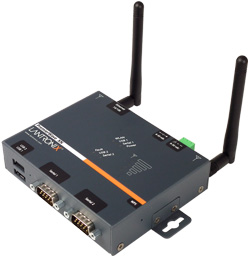Getting a Random Sample
Excel has the ability to generate random numbers from zero to one or from pre-selected number ranges. By using this feature, you can assign a random number to each row in a set of data and sort them randomly.
- Getting a Random Sample
- Generating a Random Number
- Generating a Random Number within a Designated Range
Getting a Random Sample
When selecting a random sample from a collection of data you must first assign a random number to each row. Then you will copy and paste the random values to another column, which you will then sort in ascending order.- If Column A is not already empty, add a column to the left of it
- In Column A, select the rows of cells you would like to assign a random number to
EXAMPLE: If your data vertically spans 390 rows, select cells A2 through A390, but do not highlight the title cell A1. - In the Formula text box, type =RAND()
HINT: If the Formula bar is not visible, from the View menu, select Formula Bar - Press [Ctrl] + [return]
NOTES:
Column A now displays random numbers corresponding to each row.
Each cell, however, contains a formula and cannot be sorted. - Select all of the cells containing the random numbers that have just been generated
- From the Edit menu, select Copy
- Place your insertion point in the first cell at the top of Column B
- From the Edit menu, select Paste SpecialThe Paste Special dialog box appears.
- Select Values
- Click OK
NOTES:
Column B now contains random numerical values that can be sorted.
The numbers will not match the values in Column A. - Delete Column A
HINT: This column contains the formulas, which are no longer needed. - Excluding title cells, select all of your data
NOTE: This includes Column A. - From the Data menu, select Sort...
The Sort dialog box appears. - From the Sort By pull-down menu, select Column A
- Select Ascending
- Click OKThe Sort dialog box closes.
Your data is in order by the random numbers. - Select your sample by selecting the number of rows for the desired sample size
EXAMPLE: Select the first 200 rows.
Generating a Random Number
The =RAND() function creates a random number between 0 and 1 in the cell(s) you specify.- Select the cell(s) in which you want to create a random number
- In the Formula text box, type =RAND()
- If you have selected only one cell, press [return]
If you have selected multiple cells, press [Ctrl] + [return]
A random number appears in the desired cell(s).
Generating a Random Number within a Designated Range
The =RANDBETWEEN function creates a random number within the range you designate. In the cell(s) you have specified, a whole number will be generated, unlike the =RAND function which generates a decimal.NOTE: If you are using the =RANDBETWEEN function for multiple cells and you do not want some of the generated numbers to be the same, be sure to designate a range larger than the number of cells you are applying the function to.
- Select the cell(s) in which you want to create a random number
- In the Formula text box, type =RANDBETWEEN([Bottom],[Top])
NOTE: Bottom is the number you want to be the lowest in your range, Top is the number you want to be the highest in your range.
EXAMPLE: To generate numbers between 1 and 50, in the Formula text box, type =RANDBETWEEN(1,50). - If you have selected only one cell, press [return]
If you have selected multiple cells, press [Ctrl] + [return]
A random number appears in the desired cell(s).
Make sure to let me know in the comments below or on our
Facebook page how you've got with it or Do you have any question

No comments:
Post a Comment